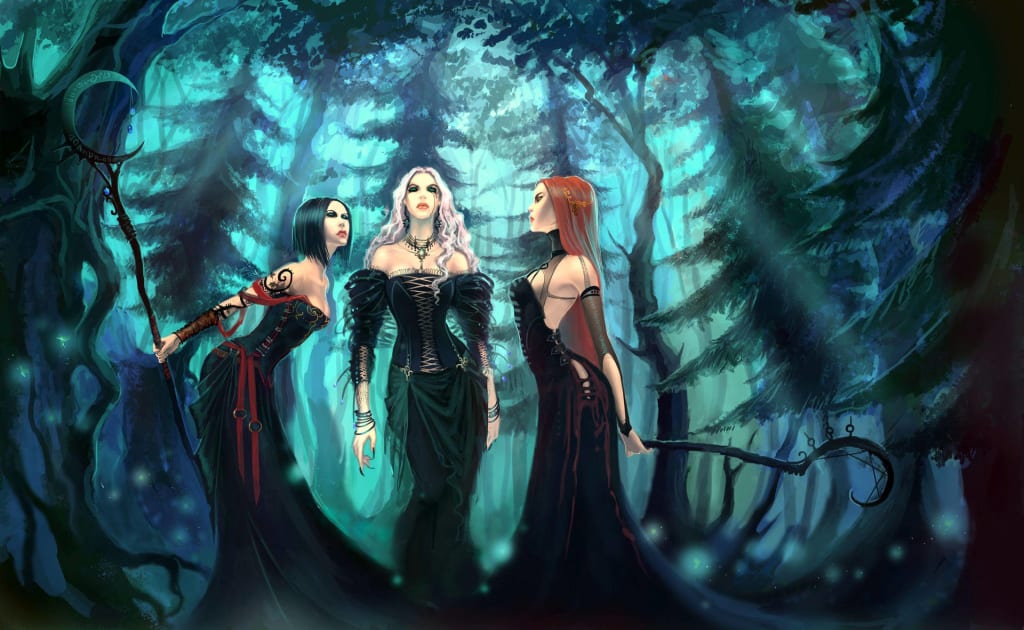
Witches have long held an iconic status in the world of spooky stories and paranormal legends. They appear in tales passed down through generations, children's books, literature for adults, television shows, and movies. These witches vary widely in their portrayal, with some depicted as powerful and clairvoyant, like the weird sisters in Shakespeare's "Macbeth." Others are shown as ugly and evil, such as the Wicked Witch of the West in "The Wizard of Oz" or the Grand High Witch in Roald Dahl's "The Witches." Some witches are depicted as lovely and benevolent, like Hermione Granger in the Harry Potter series, or the Owens sisters in "Practical Magic." On the other hand, witches like the Sanderson sisters in Disney's "Hocus Pocus" or Witch Hazel in Looney Tunes often take on a more comical role.
The diverse representations of witches share common themes. They are often depicted as powerful individuals living on the fringes of society, capable of both benevolent and malevolent acts. These tales have ancient origins, with witches and witch-like figures appearing in mythology for thousands of years. They are sometimes descendants of gods or empowered by them, while other times they are human but straddle the boundary between the mortal and the immortal realms. While these figures are often portrayed as women, they come in various forms and shapes across different cultures.
In Greek mythology, there's Medea, a princess and a devout priestess of Hecate, capable of various magical abilities. Cersei, another Greek sorceress, lured sailors to her remote island and turned them into animals. Morgan Le Fay, from Arthurian legend, possessed magical abilities rivaling Merlin's. In the Old Testament, the Witch of Endor was sought out for necromancy. Slavic mythology introduced Baba Yaga, a hideous old crone with elemental magic. Navajo mythology tells of Skinwalkers, once spiritual beings who turned to dark magic.
Despite their differences, these figures are often depicted as powerful miracle workers living on the fringes of society, accessible to protagonists in need of their aid or facing their potential devastation. Many of these stories are believed to have evolved from real-life individuals, such as priests, priestesses, oracles, wise women, and healers, who served mysterious and powerful deities associated with feminine power.
As time passed, Abrahamic religions gained prominence in Europe and the Middle East, and the old ways were treated with suspicion and fear. The Christian Church viewed all non-Christian forms of worship and nature-based beliefs as demonic. The fear of the unknown and misogyny toward strong and wise women further fueled the perception of witches as evil. The Middle Ages saw an explosion of witch trials, which resulted in the persecution and execution of countless individuals, mainly women, accused of witchcraft.
While the witch hysteria decreased in Europe during the Enlightenment, it found new life in the American colonies. The Salem witch trials of 1692 are among the most famous in history, resulting in the accusation and execution of numerous individuals. The image of the witch became associated with dark clothing, pointed hats, hideous features, and mysterious rituals.
Witches persisted in popular culture, transitioning from feared figures to Halloween caricatures. Today, many modern pagans refer to themselves as witches and practice witchcraft for protection and healing. Modern witchcraft is not inherently sinister but is often rooted in a peaceful philosophy.
The history and folklore of witches have been complex and sometimes disturbing. From their origins in ancient mythologies to the dark period of witch trials, the image of the witch remains a significant part of our culture. While the people executed during the witch trials were likely innocent and nothing like the witches in mythology and folklore, the fascination with these figures endures. The symbol of the witch carries a deep and multifaceted legacy in various traditions worldwide.
About the Creator
Enjoyed the story? Support the Creator.
Subscribe for free to receive all their stories in your feed. You could also pledge your support or give them a one-off tip, letting them know you appreciate their work.





Comments
There are no comments for this story
Be the first to respond and start the conversation.